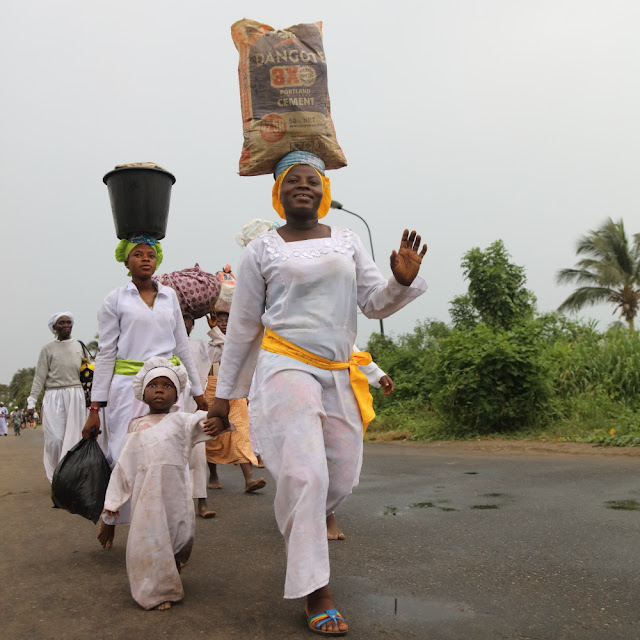 |
| provisions for the soul |
The sky is ominously dark because of a distant storm. Fortunately, it does not rain heavily where we are. Only occasional rain drops fall. The air is sticky but unusually cool. The lagoon is peaceful. A few motorboats glide over the water while rare fishermen focus on their catch. Sunday morning is also the time for church goers to congregate and pray. Some gather in white costumes and board on large boats, accommodating 40 to 50 people, to go and pray in their church somewhere on the banks of the Lagoon.
The streets of Badagry offer a similar experience. Devotees, clad in white robe, walk to their church and carry some goods on their head, presents to the church most certainly.
Not everyone goes to church though, the market works at a slow speed, young men play football, some others smoke weed, except obviously in the O2 restaurant/ bush bar which explicitly mentions that consumption of indian hemp is forbidden.
 |
| power generation |
 |
| boarding time for Sunday mass |
 |
| a concrete statue will soon be born |
 |
| afrodisiac in a bottle |





Comments
Post a Comment